#langstroth hives
Explore tagged Tumblr posts
Text

Still here!
#bees#beekeeper#beekeeping#fox#talks#honeybee#honeybees#honeycomb#honey#bee#hive#hives#long langstroth#langstroth#window#windows#access#door#natural#nature#bug#bugs#insect#insects
42 notes
·
View notes
Text


2298
#fallout 4#nora#digital#nora starts raising bees headcanon#they are of course the size of rats now.#everybody needs a hobby right?#i didn't do enough research on beekeeping until after i had already edited in the xl super jumbo beehive. . . . . oops#largest langstroth 10 frame hive box are 19 7/8” long and 16 1/4” wide by 9” deep#which can easily weigh 90 lb when full#this bitch is like three feet wide#so i don't even know#hundreds of pounds per box?#on top of being ten feet tall#lmfaoooo#it’s wildly impractical. but im not making any changes. i think it's extremely funny.
12 notes
·
View notes
Text
Honey coming in full force into the farm
Honey coming in full force into the farm
youtube
#ReefDVMs#RMSpeltz Farm#Bee#bee hive#cover#super#brood box#queen excluder#base#bee keeping#inner cover#bee hive education#langstroth hive#langstroth box#italian bees#dij camera#bee hive parts#understanding bee hive#learning bees#best hive box#best bees#best hive#hive brush#bee hive brush#hive smoker#bee tool#bee hive tool#beginners beekeeping#beekeeping#basic beekeeping
0 notes
Text
Lorenzo Langstroth unvarnished

Lorenzo Langstroth, 1890. From Langstroth on the hive & honey bee, rev. by Dadant. 1892.
December 25th, Christmas Day, is a day for sharing and giving. It also happens to be the birthday of a man known as the father of American beekeeping: Lorenzo Langstroth, born Philadelphia, Pennsylvania in 1810. With both happy occasions in mind, Mann Library is pleased to announce a resource that we’re pretty sure students of beekeeping and its history will find a wonderful gift: a fully digitized, searchable copy of Langstroth’s handwritten personal journal. Where a researcher would have once had to make an in-person trip to our special collections reading room to attempt a deciphering of Langstroth’s (infamously difficult to read) handwriting, the journal is now freely available (and actually readable!) as both a digitized version of the original work and in a transcribed form as part of the online Biodiversity Heritage Library.
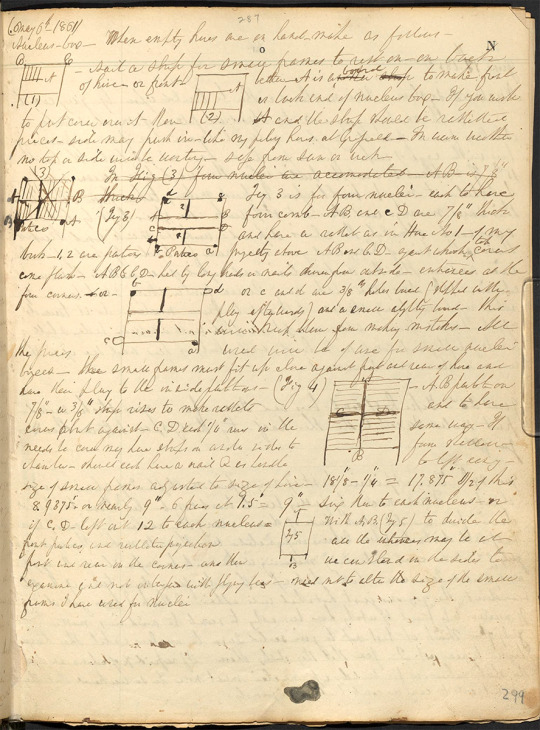
Page from "Journal on matters relating to bees, etc.," unpublished manuscript, Lorenzo Langstroth 1852-1895. in the special collections of Albert R. Mann Library, Cornell University.
For those not yet fully in the know, Lorenzo Langstroth looms large in American beekeeping history thanks to discoveries and inventions he made as a self-taught apiarist, innovations which essentially revolutionized the 19th century practice of beekeeping in North America and facilitated its development into the profitable industry of today. His guide on beekeeping, The Hive and the Honeybee, was first published in 1853 and remains in print even today. Langstroth’s story is also poignantly notable for a reason that you don’t have to a be a beekeeper to appreciate deeply: his struggles with debilitating depression, which stymied many of his professional endeavors. While working intermittently as a pastor and teacher when his mental health allowed, Langstroth found constant, life-affirming inspiration in the bee world he observed closely through the prism of the hives he kept for most of his adult life.
The history of beekeeping stretches back to prehistoric times, but when Langstroth patented his movable frame beehive in 1852 it created a worldwide revolution in the practice of keeping bees. On this page of his journal, we see the exact moment—the “aha” moment—that Langstroth landed on his brilliant insight: the significance of applying the concept of "beespace" to design hives that allow easier harvesting of honey than possible in earlier hive structures. The rest, as they say, is history.
The journal Langstroth kept is a treasure for several reasons. It provides fascinating insight into pivotal moments of beekeeping’s technological history. It is, as well, an intimate view of resilience in face of sometimes devastating mental health challenges. And last but really not least, in the comments and pet peeves that Langstroth also recorded in his ongoing notes-to-self, his off-the-record writing offers a more mundane but no less instructive tour through the day-to-day concerns—from keeping bee hives productive to the vexing challenges of protecting trade secrets and securing patents for promising new discoveries in a timely way—that would have been top-of-mind for any aspiring agricultural entrepreneur of the 19th century.
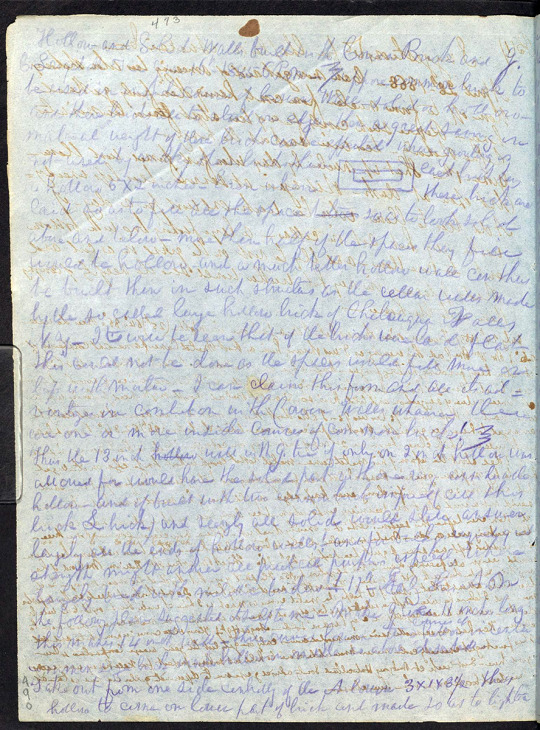
Page from "Journal on matters relating to bees, etc.," unpublished manuscript, Lorenzo Langstroth 1852-1895. in the special collections of Albert R. Mann Library, Cornell University.
The online availability of Langstroth’s journal in both its handwritten and transcribed form has been a work very long in the making. When early 20th century entomologist Everett Franklin Phillipps joined the Cornell faculty 1924, he made it his mission to establish one of the world’s most important collections of beekeeping materials—now known as the E. F. Phillips Collection at Mann Library. Recognizing the importance of one of this collections’ gems—the Langstroth journal—for the beekeeping field, Phillips began the painstaking process of transcribing 600 pages of its cramped, highly slanted script—rendered even more illegible by the frequent ink bleed-through from other pages—into easily readable typescript. The project remained unfinished at the time of Phillips passing in 1951, and others took up the work intermittently over the following decades. But it wasn’t until the epic pandemic-era national lockdown of 2020 that intrepid collections specialist Betsy Elswit finally found herself with the time needed to finish transcribing of the journal's final 200 pages. Thanks to this heroic work, a browse through the work on the Biodiversity Diversity Heritage Library today provides a look at Langstroth’s original writing with a side-by-side view of transcribed, machine-readable text. Thank you Betsy! And thank you, Reverend Langstroth, for persevering through the inspirational highs and deep lows of life to impact the practice of beekeeping so profoundly, and to leave us such a rich record of such remarkable scientific observation and personal achievement.
And with that, we leave you with our best wishes for a good, hope-filled winter holiday season!
#Langstroth#beekeeping#beekeeper#apiculture#mann library#cornell university#rare books#vintage book#archives#mental health#agricultural history#special collections#bees#honey#apiary#honey bees
11 notes
·
View notes
Text
I’m majorly retooling the most recent chapter of Langstroth on Bees; below is a section I’m deleting, as it no longer fits the tone and trajectory of the section. However, I like it too well to just drop it into a deletions file and never look at it again, so here, have some beekeeping angst!
Set during Last Bow, when Holmes has taken off for America and left Watson in charge of his bees. You may think of this as a companion piece to “From Allegany,” if you like.
~
After breakfast, I suited up in Holmes' beekeeping gear and loaded his barrow with his apiarist's notebook, his smoker, and a collection of empty supers, and proceeded to the copse that held his apiary.
I was still agitated in my mind, however, a state to which his bees must have objected, for I was stung while installing the supers -- my first sting while working with Holmes' hives. I swore and stalked off beyond the edge of the copse, yanking off my gauntlet to get at the welt on my wrist, lifting my veil and twisting my arm this way and that against the sky in an attempt to see the stinger. My arms were not long enough to see the stinger without a glass, but I scraped at the cursed thing with my hive tool, succeeding only in smearing my wrist with propolis and in no way preventing the stinger from pumping its full load of venom into me. The thing smarted abominably. Holmes would have said a few words of sentimental eulogy for the bee who had died for my sins, but I could only summon up a hatred for the wretched creature and all its brethren.
All seemed futile in that moment; I lay back in the tall grasses of the Downs, just below the lip of the hollow that cradled Holmes' apiary, and sucked at my wrist in hopes of drawing the venom out. I only succeeded in coating my front teeth with propolis. Frustrated, I bit at the welt viciously, so that one pain might supersede the other. I should have gone back to the cottage for a chip of ice for my wound, or barring that, back to the apiary to close up the hive box and retrieve my beekeeping equipment, but I did neither, laying back and watching the clouds scuttle across the sky while I chewed at my wrist.
It occurred to me, as I watched the sky, that the editor of the Bee Journal might know Holmes' location; that Holmes, in communicating with him, had trusted his fellow apiarist where he had not trusted me. Or Holmes might only have sent his letter to some trusted intermediary to forward to the Journal: his brother or Captain Kell, or perhaps a now-grown Irregular. It would not be the first time he had trusted his brother or an Irregular before trusting me.
It was useless to speculate on Holmes' methods. The upshot was that Holmes did not wish me to know where he was. I would only drive myself mad brooding upon it. Mad and bee-stung, both, apparently.
But as I gazed upon the warm blue sky, I thought of Holmes, laying aside his false persona and Irish accent to write a letter about his beloved bees. Perhaps he did so even now, in the pink, cold light of an American dawn, while his criminal compatriots still slept. Did he miss his bees? Did he wish, as I did, for the opportunity to lay here beside me near his apiary, the both of us watching the clouds together? Would he have teased me for my first sting, or earnestly scolded me for it? Would he have gently tended to my wound? Would he have treated it as a badge of honour?
Even as I thought on such things, I tried to summon the bitter thought that if he was lonely in America he had no one to blame for it but himself. But I knew that to be a lie. He had never wanted this case; I had pressed him to take it. His preference would have been to bask in his retirement, with his bees before him and me at his side, as we had done the long summer before.
For a single summer, I, too, had been content with that. Another long summer stretched before me, and it seemed impossible that I should be content with it again.
By this time the welt on my wrist was bruised and riddled with tooth marks; the damage the bee had wrought on me was minor compared to what I had done to myself. Holmes would certainly have scolded me for it had he been there to see it.
I missed him, then, missed him with a fierce, simple longing, unsullied by my resentment at being left behind.
But even as I longed for him, there was no solace to be found: Holmes was in America, possibly in peril of his life, but certainly unreachable. Meanwhile, I was stranded in Sussex, pretending to be a beekeeper.
It was all wrong, all of it.
I took up my veil and gauntlet, and went to see to his bees.
13 notes
·
View notes
Text

[ Image description: photograph of a device on a hotel breakfast counter. The device is holding a single Langstroth (I think?) frame of honeycomb in an upright position within a glass frame. There is a spout with a wood-handled ball valve in front, and a bowl underneath the spout to capture drips, which is partially filled with golden honey. The frame has no foundation installed, and the comb itself is dark brown and only partially uncapped. A small attached sign reads “Miel - honey”. End ID. ]
I am in Costa Rica on a student tour. In our hotel, there is this thing: I am pretty sure this is a honey subscription service with the Linda Vista Farm (and Apiary, obviously).
Costa Roca is very much into sustainability and eco-tourism, and it shows: to me, this display is perfect, and captures so much information about it in one compact package:
1) The lack of foundation: I think there are wires in their for support, but these bees are not being encouraged to build on foundation. They can do their own thing; imo this is good. Plus, the support that a beekeeper might need to provide if they’re going to extract the honey by spinning the frames is not needed here. You can see the beeways that the bees have built for themselves to transit between combs, which is neat.
2) The color of the wax: fresh wax is light gold in color, so this dark brown wax is old. These frames are being reused, which totally makes sense for a subscription service for this dispenser, and if that’s what they’re doing, I suspect that you just turn in an empty frame for a full one (or maybe you get a whole hive body of 10 frames). The benefit of this for the bees is that they don’t have to rebuild the frames (making wax is metabolically expensive). Cons, though, could be that diseases might be transmitted this way, especially if the frame goes into a different colony’s hive.
3) Most of the cells were uncapped. I think that the hotel staff uncaps sections of the comb as needed, rather than the whole thing at once, which I think would flood the device.
It’s just absolutely brilliant; I cannot stop thinking about it.
If you’re a beekeeper, especially if you’re from Costa Rica and/or know more about La Granja Linda Vista, please reblog and add your thoughts!
2 notes
·
View notes
Text
The Buzz on Honey Bees and Their Business
The Buzz on Honey Bees and Their Business: Selling Honey Equipment Online
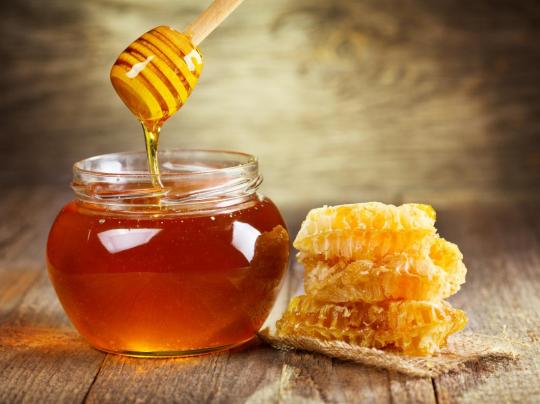
The honey bee, a small insect with a vital role in our ecosystem, has increasingly become the center of attention not just for its environmental significance, but for its burgeoning business opportunities. If you're passionate about honey bees and want to delve into the world of honey-making, then the online market has a plethora of equipment and tools to get you started. From essential beekeeping supplies to those crucial finishing touches like heat shrink bands for jars and bottles, you're just a click away from starting your honey business.
Understanding the Honey Bee Business
Before diving into the types of equipment you can sell online, it's crucial to understand the honey bee business. As these industrious creatures collect nectar, they produce honey—a sweet, golden liquid loved by many. But turning that liquid gold into a market-ready product requires specific tools and techniques.
Essential Equipment for Honey Extraction
Beehives: The primary home for your honey bees. They come in various styles, but the most common are the Langstroth and Top-bar hives.
Bee Suits: These protective suits ensure beekeepers can handle their bees without the risk of stings.
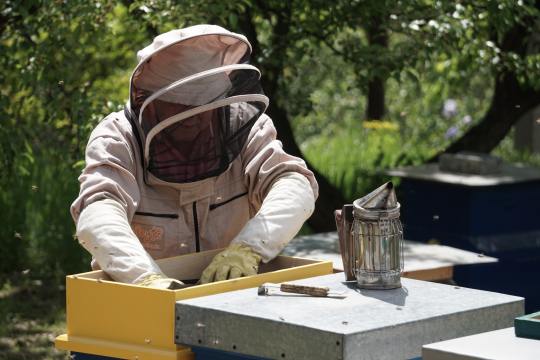
Smokers: Used to calm bees during hive inspections.
Honey Extractors: A device that spins frames, extracting honey without damaging the honeycombs.
Perfecting the Packaging Process
Once you've successfully harvested your honey, the next step is packaging. This is where details like shrink wrap bands for jars come in.
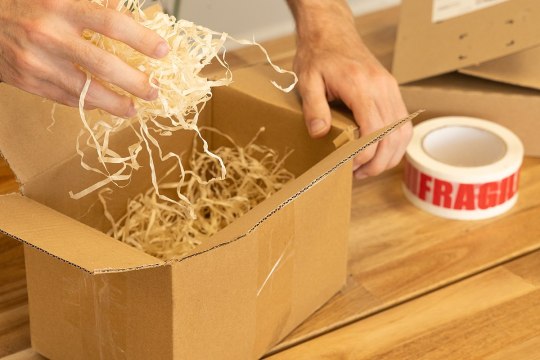
Glass Jars and Bottles: When we muse about honey, the quintessential, timeless packaging we think of? That's right. Glass. They stretch across the spectrum in sizes, some tiny like a delicate thimble, others hefty, holding treasures of amber nectar. Shapes? Oh, they dance from conventional rounds to eclectic hexagons. Catering to the ever-evolving market, they stand resolute, each telling its tale.
Heat Shrink Bands for Jars and Bottles: You've seen heat shrink bands for bottles. Perhaps, without much thought. But, ever think of the genius behind these slender bands? Once dormant, with a hint of heat, they snap into action. Hugging your bottle or jar's neck, they promise safety, scream professionalism. Tamper? Think twice. These heat shrink bands for jars are guardians; their mere presence a challenge to any foul play.

Labels: Imagine walking through an aisle, and a myriad of jars beckon. What makes you pause, tilt your head and reach out? Often, it’s that piece of art draped around the bottle: The label. More than just a sticky piece of paper, it’s a canvas that whispers tales of the golden liquid within. And more than that, it often sings songs of the brand's ethos, legacy, and promises.
Selling Equipment Online:
Fancy a dive into the lucrative world of online honey-equipment sales? A realm awaits. You see, the beekeeper's world isn’t just filled with buzzing. Be it the newbie next door or the seasoned pro from the valley, they’re all scouring for top-notch gear. And while the basics hold their ground, why not sprinkle your inventory with diverse, vibrant heat shrink bands? Every hue, every size. And, to spice things up, keep an eye on the beekeeping vogue. Evolve, adapt, and stay a buzz ahead.
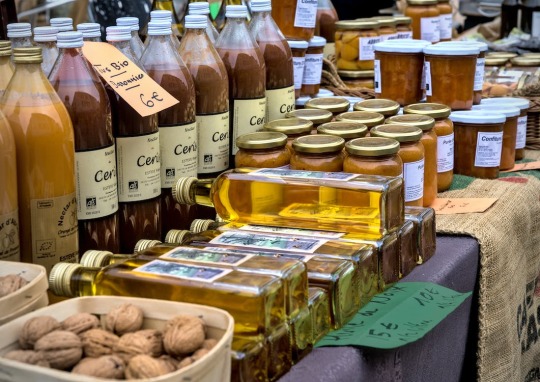
Conclusion:
It’s not just about the hum and the honey. The bee business? It’s a tapestry. Threads of art, science, and commerce intertwining. And as for success? Well, get the gear right. Whether it’s a state-of-the-art extractor or a humble heat shrink band, every cog matters. The golden road to triumph? Just around the corner.
Here's to the art of beekeeping and the sweet symphony it brings! Cheers!
2 notes
·
View notes
Text
Beekeeping: An Introduction to the Art and Science of Beekeeping
Introduction:
Beekeeping, also known as apiculture, is an ancient practice that involves the management and care of honeybees for their valuable products and services. It is an art, a science, and a rewarding hobby that has captivated humans for centuries. This article serves as an introduction to the captivating world of beekeeping, exploring its historical significance, the fascinating life of honeybees, and the basic components of starting a beekeeping venture.

Historical Significance:
Beekeeping has a rich and storied history that dates back thousands of years. Ancient civilizations, such as the Egyptians, Greeks, and Romans, recognized the importance of bees and their honey. Honey was not only a prized sweetener but also held symbolic, medicinal, and culinary value. Throughout history, beekeeping methods and techniques have evolved, and different cultures have contributed their knowledge and practices to this timeless tradition.
The Life of Honeybees:
To understand beekeeping, it is essential to delve into the intricate lives of honeybees. Honeybees live in highly organized and complex social structures within their colonies. Each colony consists of a queen bee, worker bees, and male drones. The queen is responsible for laying eggs, while the female worker bees perform various tasks, such as foraging for nectar and pollen, nursing the brood, and building and maintaining the hive. The male drones' primary role is to mate with a queen from another colony.
Honeybees' remarkable ability to communicate through a dance-like movement known as the "waggle dance" is fascinating. This dance conveys information about the location and quality of food sources, enabling other worker bees to navigate and collect nectar and pollen efficiently.
Starting a Beekeeping Venture:
Embarking on a beekeeping journey requires careful planning, knowledge, and dedication. Here are some basic components to consider when starting a beekeeping venture:
Research and Education: Begin by educating yourself about honeybees, their behavior, and the fundamentals of beekeeping. Read books, attend workshops, and seek guidance from experienced beekeepers. Local beekeeping associations and online resources can provide valuable information to help you get started.
Hive Selection and Equipment: Choose the appropriate type of beehive for your needs. Common types include Langstroth, Top Bar, and Warre hives. Acquire essential equipment such as hive bodies, frames, foundation sheets, a smoker, a beekeeping suit, gloves, and hive tools.
Bee Colony Acquisition: Obtain bees for your hive. You can purchase a package of bees, which includes a queen and worker bees, or acquire a nucleus colony (nuc) consisting of a small, established bee colony with a queen.
Hive Placement and Management: Select a suitable location for your beehive, considering factors such as sunlight, shelter from the wind, and a water source nearby. Regular hive inspections and management tasks, such as monitoring for diseases, pests, and ensuring a sufficient supply of food, are essential for maintaining healthy colonies.
Safety and Beekeeping Practices: Beekeeping requires proper safety precautions. Be familiar with bee stings and allergy management. Wear protective gear when working with bees, and handle the bees with care and respect. Follow sustainable and ethical beekeeping practices, including avoiding unnecessary pesticide use near the hive and promoting biodiversity by providing a variety of forage sources.
#Beekeeping#Apiculture#Honeybees#Beekeepers#Beehive#HoneyProduction#Pollination#BeekeepingHistory#BeeColony#BeekeepingEquipment#HiveManagement#BeekeepingEducation#BeekeepingJourney#StartingBeekeeping#BeekeepingTips#BeekeepingBeginners#BeekeepingBenefits#BeekeepingPractices#SustainableBeekeeping#BeekeepingCommunity#BeekeepingResources#BeekeepingGuide
2 notes
·
View notes
Text
Day 1 - Washington, DC

Two Langstroth hives sit surrounded by green foliage on a warm spring's day. In the morning daylight, the front boxes of the hives are illuminated save for the shadow of an overhanging leafy branch that marks the top few boxes. The white hive boxes are flecked with brown smudges and specks. Occasionally, a black insect like an ant will move across a box, or a jumpy bird will land below the hive and investigate for edible debris before being chased away. White flowers bloom on trees around the boxes as worker bees fly incessantly through their marked entrances. They hover a second before floating onto the landing board and walking through the entrance reducer. In the early morning, the bees fly and fly and fly. They collect pollen and nectar and enjoy increased productivity. As the day goes on, they try and collect water from an unexpected source. Dewy droplets, some thick enough the bend the grasses they rest upon, refract sunlight like tiny crystals, and are a sneaky source of water for the bees. To drink those water droplets, they climb each blade of grass and quickly flick out their tongues. When they reach the top they tumble messily on the ground and keep on going.
2 notes
·
View notes
Text
My dad got me watching Wednesday and I'll be honest, I'm only 2 episodes in and I have a major problem with the show.
There's a "beekeeping club" that Wednesday joins with like one other kid who's supposed to love beekeeping and know all about it, but the show uses skep hives instead of the modern Langstroth or even a National. Probably because they fit the visual theme better and look "vintage"
The difference is, both the Langstroth and National types of hives have removable frames, whereas the skeps do not.
So, to gather honey from a skep, you have to completely destroy the hive.
No more honey stores for winter, no brood frames, nothing. You're taking it all and they can't build back up in time for winter, if they even survive the harvest.
Eugene Ottinger is an irresponsible beekeeper and only cares about the aesthetic.
4 notes
·
View notes
Text
There are literally giant bee farming companies that feed their bees Mountain Dew when flowers are out of season
Can you imagine expecting ANY animal to survive off of Mountain Dew and think that that's okay
These companies also keep their beehives all in one place, and the hives are all the same. Bees need their hives to be differently colored or shaped or placed, so they can identify which hive they live in. Keeping them so close together confuses the bees, which causes population drift, which helps spread disease and parasites
These hives are also generally an inferior version Langstroth hives, which were originally designed to give the bees sufficient space and insulation, but which the mass-produced, basically-made-of-plywood modern versions do not. The bees living in these conditions are often killed by cold, and also by being transported throughout the year to different monocrop farms.
The beekeepers treat mass murdering and then replacing at least half their bees every year as a regular business expense
vegans making honey a bee labour issue is the funniest thing imaginable because like, you picked the one animal that has already unionised
138K notes
·
View notes
Text
Long time no post! How is everyone??? I moved!
The bees are *mostly* alright based on my most recent “checkup” and I’m only down one and a half colonies that I knew were already weak. One of them I suspect was taken out due to a leak in the lid that made the wood damp and less insulating. They must have left very early in the season because the bottom of the hive was FULL of wax moth cocoons and eggs and cockroach poop and all kinds of nastiness. I scraped it out and didn’t see any sign of lasting mold on the wood though so it mustn’t have been too damp.
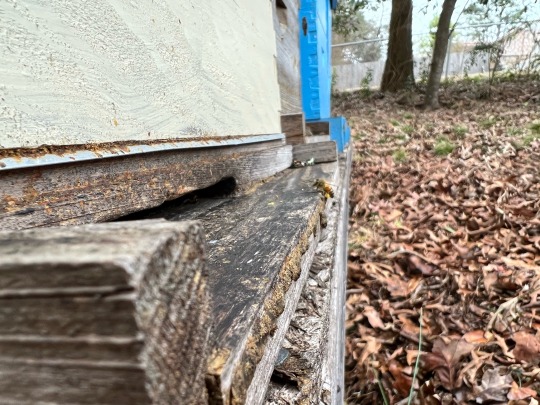
The other four langs are doing just dandy as well. All have enough bees in them to show activity at 50f and overcast so they’re apparently healthy. Already bringing in pollen too!
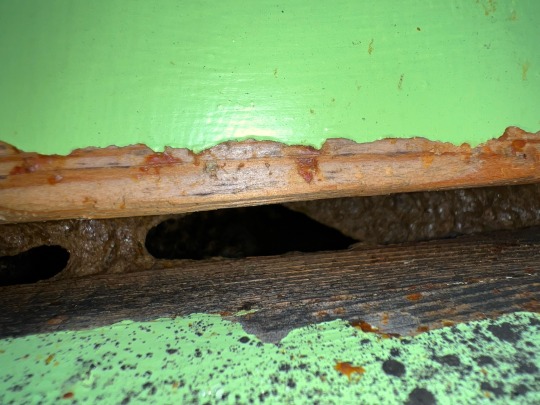
The super hive seems to be doing incredibly well also! They have propolized up the front of the hive in what I can only presume is an effort to manage air flow and the openness of the entrance. Since I seldom ever check the front 10 frames I suppose that’s alright, though if they are to abscond it will be a chore to get those frames out.
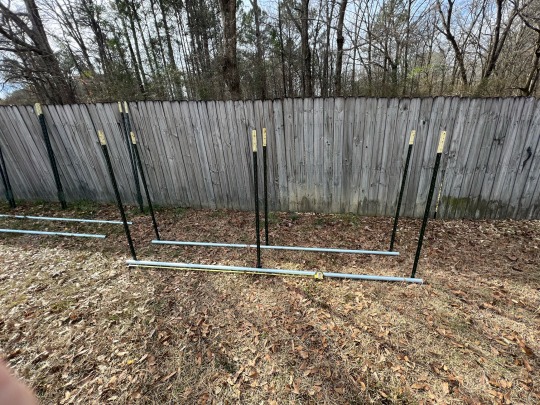
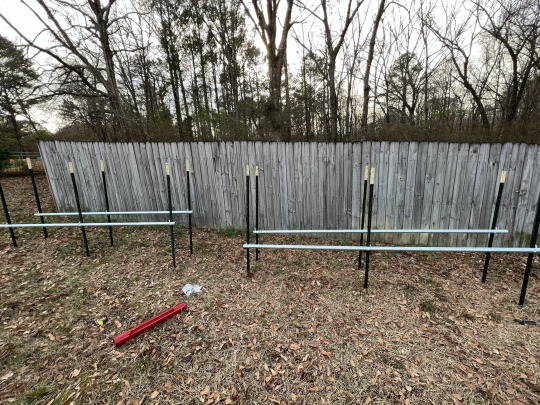
As mentioned, I did move! The bees are still at my old bee yard, but my new place has a nice open yard that I can put them in so I’ll be moving them soon hopefully. I’m setting up bee benches according to a guide I found on YouTube that is all metal and can be adjusted/moved as necessary, because the yard is unlevel everywhere. I tested several positions on each side with my full weight and they seem to hold up quite well. Though I think I may need to adjust some of them because I may have overdone the forward slope a bit. You can really see how uneven the yard is, since the benches are level.
#bees#beekeeper#beekeeping#fox#talks#honeybee#honeybees#honeycomb#honey#bee#hive#hives#langstroth#long langstroth#propolis#comb#apiculture#diy#savethebees#natural#nature#save the bees
56 notes
·
View notes
Text
Beehive parts by Tabitha
What to learn the parts of hive, Tabitha will show you
youtube
#hive, #beehive#beekeeping
#ReefDVMs#RMSpeltz Farm#Bee#bee hive#cover#super#brood box#queen excluder#base#bee keeping#inner cover#bee hive education#langstroth hive#langstroth box#italian bees#dij camera#bee hive parts#understanding bee hive#learning bees#best hive box#best bees#best hive#hive brush#bee hive brush#hive smoker#bee tool#bee hive tool#beginners beekeeping#beekeeping#basic beekeeping
1 note
·
View note
Note
For your WIP game, how about 'steady' or 'playful'?
Thank you for the words! No hits for 'playful', but I can give you 'play' while they're feeling playful! Both from Langstroth on Bees.
Play(ful):
We made our way back to our cottage, casting each other sly and bemused glances, both of us feeling inordinately foolish with the joy of our squandered morning. In fact, I planned to squander quite the remainder of it, if he let me. Unfortunately, he was temperamental enough to play the coquette and spend the rest of the morning with his hives, simply for the pleasure of leaving me longing for him. I hoped that this morning he would spare me.
Steady:
"Oh, give me strength," I muttered, and marked my page. I took refuge from his agitation in our workroom, well out of the orbit of his pacing. There, I tried to lose myself in the steady rhythm of saw, chisel, and sandpaper -- working not on his gift, but something I could afford to ruin with a careless slip of the chisel -- but I only found myself stewing in my irritation, muttering imprecations against him as I worked.
#wip meme#langstroth on bees#how I will ever play this game after I publish langstroth and do not have it to draw upon#I do not know
6 notes
·
View notes
Photo
Ok but building new comb is part of normal bee behavior. They produce wax naturally, where are they supposed to put it when the hive is completely full of comb already and there's no free space anymore? In langstroth hives, you remove frames and put in empty ones once in a while to encourage your bees to build new comb. In top-bar hives, removing comb is just how the harvesting process works.
When bees run out of space to build, they LEAVE. No more bees.
Also, having honey just.... hanging out like that? Or in any kind of "so super easy to harvest without disturbing the bees!!!" thing? You are not the only animal that will benefit from that. Raccoons, opossums, deer, BEARS... You think you don't have bears because you live in a suburb? Think again dog. If you live in a region with bears, you have bears.
This is a cute idea to appease vegans and people who either don't understand how beekeeping works or don't care enough beyond "bees cute honey good" to actually put in the effort of maintaining a proper hive, but I can't imagine this actually working long-term. I think it's fairly telling that I've never seen these things being used by beekeepers on youtube or anything. If there was an effective alternative to lugging hive boxes and spinning comb, I have to assume everybody would be jumping on it and switching.
Edit: as expected, a quick google shows that almost every glowing positive review is from flow's own website, meanwhile experienced beekeepers are saying it's a gadget meant for the absolute most inexperienced newbies who don't really have much interest in beekeeping, just free honey. Literally why would you want to keep bees if you don't want to keep bees? The work is the point. And you harvest maybe once or twice a year anyway, it's not even that much effort that this thing saves you.
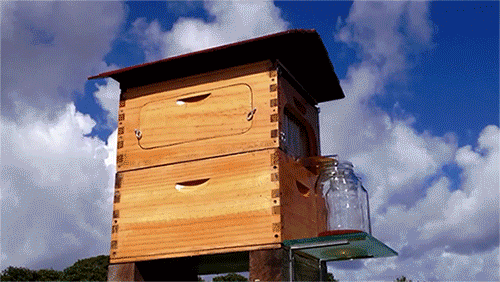


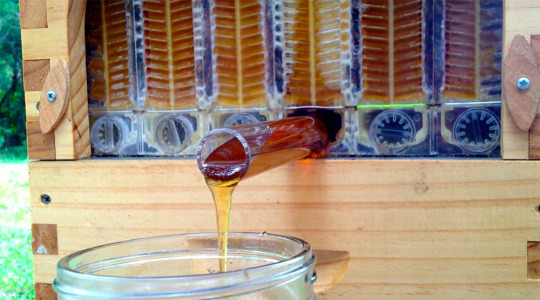
WATCH: Honey on Tap: A New Beehive that Automatically Extracts Honey without Disturbing Bees [video]
215K notes
·
View notes
Text
Discover the Benefits of Responsible Beekeeping: Flow Hive for Sale
It is not necessary to take apart the hives and take out the frames to harvest honey while using the flow hive for sale. Rather, you only need to turn a lever to open the honeycomb's channel, and the honey will then drain into the container of your choosing via a pipe at the hive's rear. As the honey disappears beneath their feet, the bees remain mostly undisturbed back in the hive.
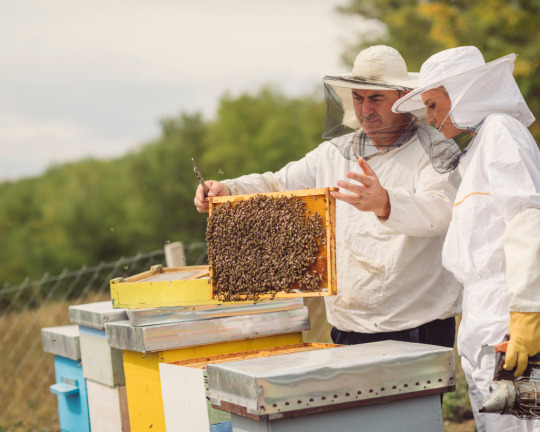
There are multiple advantages to exploring bee keeping services. Simply turn the lever back once you're done emptying, and all of the cells are reset and prepared for refilling. After that, the bees uncap the tubes and resume their work undisturbed. This reduces the amount of work that goes into collecting honey.
Improve Your Beekeeping Skills: Melbourne Flow Hive for Sale
The Flow Hive may be briefly described as a standard Langstroth hive that uses somewhat more bee area than normal. It makes use of stackable boxes with an inner cover, an outer cover, and a bottom board that holds Langstroth frames. The Flow Hive's sole distinguishing characteristic is its honey box, which is packed with plastic frameworks that enable the arrangement of honeycomb cells to be adjusted with a metal key so that the nectar flows out a spout and down.
Exploring the Various and Principal Advantages Of Beekeeping
Having a pastime to pass the time while you're not working makes life more meaningful. Everybody should set aside a portion of their days for a fulfilling hobby or pastime that also has a constructive impact on the world. All of these are combined in beekeeping. It offers many incredible benefits, but it also requires a lot of hard effort.
Whether it's for a profession, a pastime, or a combination of the two, beekeeping has something to offer everyone, from producing delicious honey to protecting important environmental species. These are a few of the principal advantages of beekeepers that you might experience.
Source
0 notes